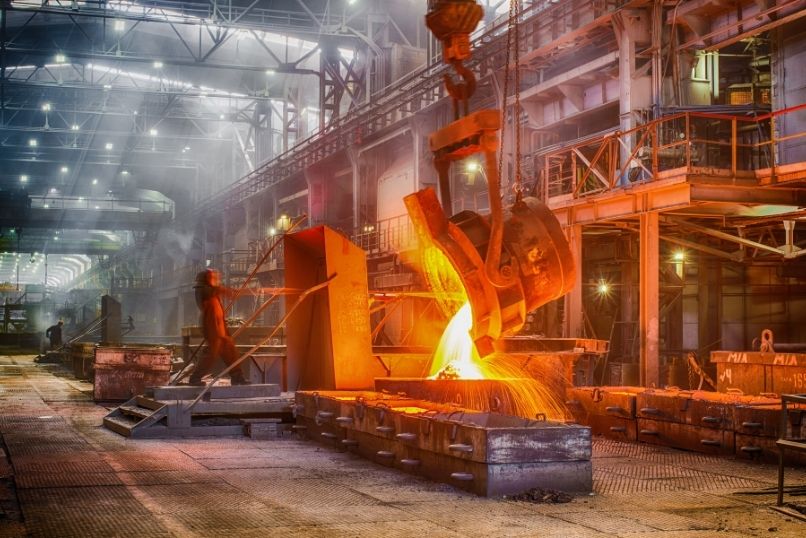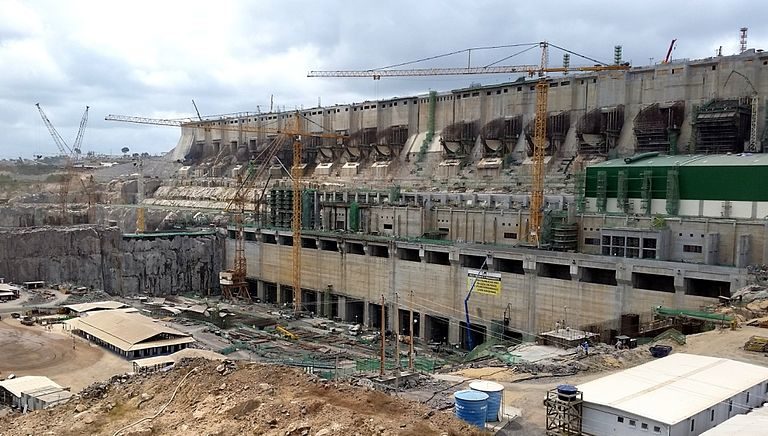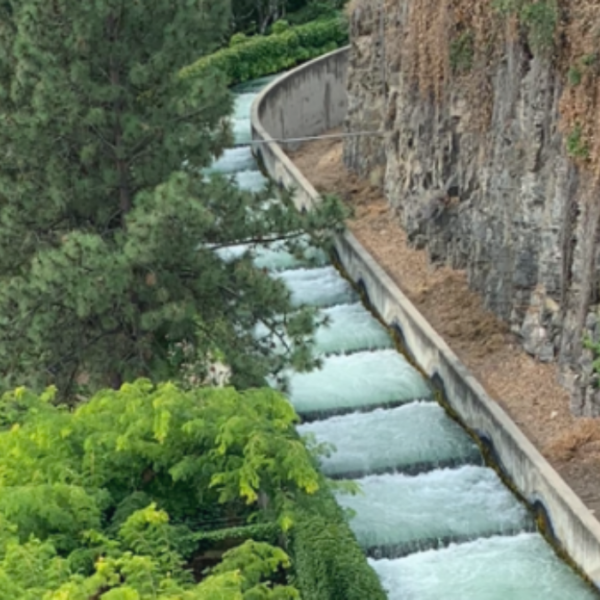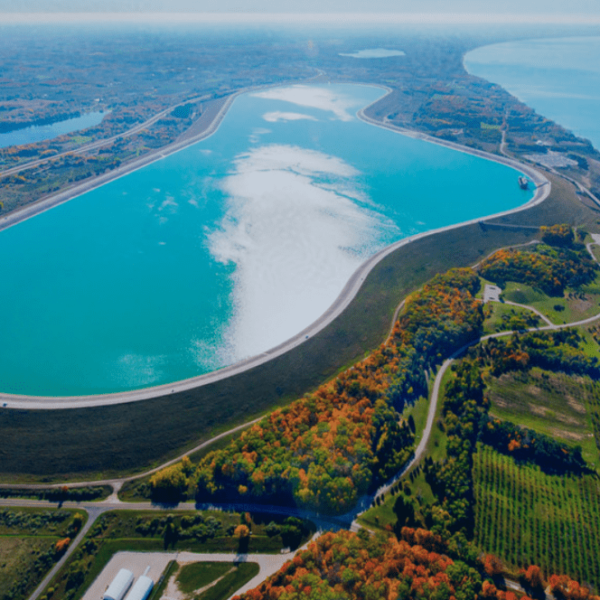Maintaining and modernizing the existing hydropower fleet requires a robust supply chain to support operations, ensure grid reliability, and help achieve the Biden Administration’s goal of a decarbonized grid by 2035.
Yet, the global hydropower supply chain is subject to uncertainties – material and manufacturing bottlenecks, worker shortages, and decreasing numbers of contractors responding to requests for bids – which all pose major challenges to hydro project owners/operators.
Oak Ridge National Laboratory researched the global hydropower supply chain, analyzed their findings, and recently published results in the Hydropower Supply Chain Deep Dive Assessment report.
While the Oak Ridge researchers examined several supply chain challenges facing the hydropower industry, two of the standouts are:
- Electronic components have opaque supply chains and high rates of obsolescence
- Longer lead times have led to greater difficulty in procuring replacement parts and equipment
POWERHOUSE spoke with the primary authors of the report about these challenges and their potential solutions. While both issues possess a host of unique obstacles, they can be overcome by utilizing the following strategies:
- Compiling spare parts
- Developing a buyer’s guide for equipment and manufacturers
- Early planning
- Forging strategic alliances across renewable industries to reshore manufacturing capabilities.
The authors stress that, overall, adaptability and awareness are key to successfully navigating the challenges of the global hydropower supply chain.
WHY SUPPLY CHAIN DATA MATTERS
Prior to the Hydropower Supply Chain Deep Dive Assessment report, little public data was available to trace hydropower supply chains. Understanding the market enables manufacturers, suppliers, and asset owners to analyze key trends and make informed decisions.
While the U.S. supply chain adequately serves the existing fleet, the stressors placed on it by external factors –steel castings not procured domestically; stator windings imported from international partners; and limited, overbooked foundries serving multiple international clients – challenge the supply chain’s balance.
To gather data on the hydropower supply chain for their report, Oak Ridge National Laboratory scientists conducted desk research and 14 interviews with hydropower owners, original equipment manufacturers, and consultants to unearth supply chain data and discover workable solutions to the most pressing obstacles facing the hydropower industry.
Oak Ridge National Laboratory’s data scientist Megan Johnson, who served as one of the primary authors of the Hydropower Supply Chain Deep Dive Assessment, noted that supply chain hurdles have required hydropower manufacturers and owners to deepen their coordination:
“For hydropower manufacturers, with the requests from owners to modernize facilities and developers moving forward with new projects, they have had to put an emphasis on being creative. Planning becomes that much more important as the wait time for importing materials has been compounded with workforce challenges.”
The turbine market, for example, remains healthy in the U.S.; two of the ‘big three’ global turbine original equipment manufacturers operate manufacturing facilities in the United States. The diversity of suppliers is higher for turbine units, <=30 MW, than for larger units, which makes the equipment more reliably obtainable.
The report’s data also shows the limitations of the pre-existing supply chain, as two of the big three turbine manufacturers have capacity to handle more business, but that capacity is shaped by international factors. For instance, out of the countries operating foundries, each foundry also serves the needs of multiple countries.

To illustrate the example, when a company in the United States wants to procure a new turbine greater than 10 tons, it may face the bottleneck of steel casting, as turbines of this size cannot be procured domestically.
One of the manufacturers interviewed for the report believes that half of the hydropower turbines installed in the United States, if refurbished, would then need steel casting of more than 10 tons, which is becoming increasingly difficult to obtain because of outsized demand worsened by the limitations of each foundry’s capacity.
The authors at Oak Ridge National Laboratory offered potential solutions for hydro project owners/operators to consider adopting to minimize the strain caused by heightened demand for equipment. By planning as early as possible for equipment needs, compiling spare parts, and, for those with multiple plants, sharing part loads between plants, project owners can manage the challenges.
TWO SUPPLY CHAIN CHALLENGES … AND THEIR [POTENTIAL] SOLUTIONS
When speaking with Megan Johnson and Rocío Uría-Martínez, the authors of the Hydropower Supply Chain Deep Dive Assessment, the conversation explored the following issues, as well as their potential solutions.
1. “Electronic components have opaque supply chains and high rates of obsolescence.”
The hydropower industry prides itself on maintaining physical equipment, striving to ensure that devices like governors last a lifetime. With creative solutions to longevity, such as getting an old governor reverse engineered, ingenuity keeps critical equipment alive and running.
Yet, the rate at which electronic components become obsolete is much more frequent than their traditional counterparts. This is largely due to the need and speed at which electronic parts require replacement. Electronic components, unlike mechanical hydropower equipment, are not often repairable and generally need full-scale replacement after their condition deteriorates. One of the interviewees the Oak Ridge scientists spoke to also noted that electronic components are often replaced before they deteriorate or fail. For instance, obsolescence can occur when a company producing the components stops supporting them (e.g., no more available spare parts).
Plant owners striving to have ‘state of the art’ components experience the breakneck speed at which electronics progress and change, rendering once ‘top-of-the-line’ electronic components obsolete. With the added risk of cyber security breaches, difficulty obtaining internationally manufactured components during global shortages, and long wait times for parts, the bottleneck for electronic components is becoming more pronounced.
Through the creation of a “buyer’s guide,” the hydropower industry could address the dilemmas brought about by the rate of electronic obsolescence and procurement hurdles. A buyer’s guide would help by acting as a directory of commonly used parts and the vetted suppliers who provide them, and it would also serve the purpose of sharing information regarding when electronic components become obsolete.
If coupled with proactive equipment assessments – procuring backups for critical components, tracking equipment lifespans, and developing relationships with manufacturers to learn more about availability – hydro project owners can better position themselves to assess their electronic component needs.
2. “Longer lead times have led to greater difficulty in procuring replacement parts and equipment.”
The Federal Energy Regulatory Commission (FERC) process for hydropower licensing and relicensing is notoriously laborious. According to the Challenges in the Post-Licensing Stage of U.S. Hydro Development report, which was created by Oak Ridge National Laboratory, a sample study of 83 FERC-licensed projects, which completed the process from application to issuance between 2003 – 2016, had a median time of 3.34 years, and the projects that took less than two years were all below 10 MW.

Because of this long lead time, for new hydro projects, or those undertaking relicensing, the best time to have conversations with equipment manufacturers is before the project starts. The resulting dialogue may help smooth out the process of procurement or provide a more complete understanding of the potential hazards ahead. The construction phase was highlighted as an area where projects halted, and while there was exploration of the topic, one of the potential solutions dealt with reshoring – the process of bringing back manufacturing services to the United States from overseas.
For example, when looking at steel casting needs, the hydropower industry is not alone in requiring access; the wind power industry is also facing supply chain issues related to limited steel casting capacity. If renewable industries increased their communication with one another by developing an ongoing dialogue, then there would be more strength in the pooling of demands. Through the development of these strategic partnerships, the renewables industry could more readily find and identify manufacturing opportunities in the U.S., as well as demonstrate the domestic demand for said services and materials. This would go a long way in addressing the steel casting issue.
THE BOTTOM LINE
The clock is ticking on the race to reach a clean energy grid. With environmental and governmental demands pushing the need for a carbon-free future, as seen in the Biden Administration’s goals for carbon pollution-free electricity in the U.S. by 2035, ensuring the reliability of the supply chain is critical because it allows the construction of new renewable projects and the maintenance of pre-existing projects. By strengthening the supply chain and reacting to the hurdles challenging its operation, hydropower operators will be able to increase hydropower capacity.
By forming working groups, creating metrics to maintain accountability, and through collaborative, inter-industry partnerships, the hydropower industry can enhance the dependability of the supply chain.
TO LEARN MORE …
If you’d like to learn more about the subject matter discussed in this article, check out Oak Ridge National Laboratory’s reports on the “Hydropower Supply Chain Deep Dive Assessment” and “Challenges in the Post-Licensing Stage of U.S. Hydro Development.” Both are exhaustive, important resources, and they offer knowledge to those looking to better understand the global hydropower supply chain.











